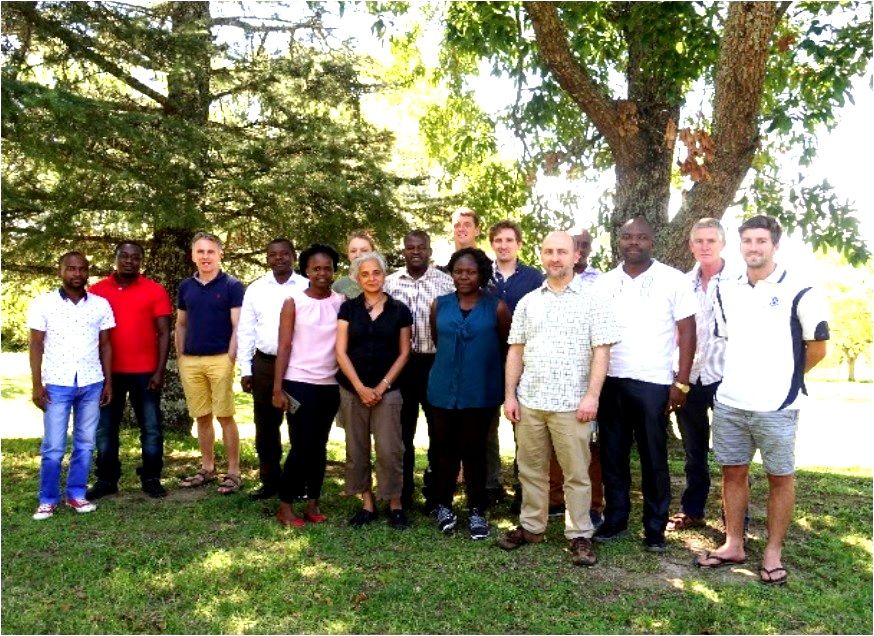The main purpose of this workshop was to offer some training in the use of basin scale hydrological models. However, it was also considered appropriate to include some additional presentations and discussions on the use of detailed floodplain hydraulic models (specifically LISFLOOD-FP) as well as sediment modelling.
The focus of the first day was on the use of the Pitman model as part of the Rhodes University (Institute for Water Research) integrated modelling framework (SPATSIM). Prof Hughes presented a brief overview of the generic (i.e. model independent) facilities available in SPATSIM for storing, managing and analyzing hydrological data and how these data can be linked to the input/output requirements of a wide range of models (including the Pitman, basin scale rainfall-runoff model) through a spatial data interface that makes use of shape files. The focus then shifted to the application of the Pitman model itself and the various version of the model that can be applied, including versions that allow for uncertainty analysis.
The second day continued with the Pitman model and Prof Tshimanga took the workshop participants through the steps involved in setting up the model using a worked example from a part of the Congo basin. The workshop participants were all provided with the necessary software and data so that they could get some hands-on experience of setting up the model. The afternoon session concentrated on the LISFLOOD-FP hydrodynamic model, developed at Bristol University. Prof Bates presented some of the background to the model as well as the details of it’s structure and examples of where it has been applied in other parts of the world.
Wednesday morning continued with the core themes of the two models and the possible ways in which they can be linked, while the afternoon was spent on a field visit to some of the surrounding areas of Grahamstown. Kyle Smetherton and Jane Tanner introduced the workshop participants to some of the interesting issues related to the links between surface and groundwater resources in the Grahamstown district.
Thursday morning was dedicated to presentations from the CRuHM students as well as some of the postgraduate students who are doing MSc or PhD projects at Rhodes University is research areas related to the CRuHM project (i.e. Pitman and LISFLOOD-FP model applications and sediment modelling). There were some interesting discussions around these projects, including the project proposals from the four students who are part of the CRuHM project.
Thursday afternoon was intended as a further session of hands-on Pitman modelling practice for the participants. However, the Congo basin example that we were using earlier in the workshop presented a number of challenges in getting reasonable model results and we ran out of time to properly complete the modelling exercise. This ‘problem’ did highlight some of the issues involved in setting a rainfall-runoff model up in a new area and therefore was not a complete waste of the workshop time.
Friday morning focused on some general issues about PhD development skills and the discussion was by led by Prof Paul Bates, who questioned everybody about inter alia the most difficult issues that they had to grapple with while pursuing their PhD studies and what advice they would give to future postgraduate students. The second part of the morning and the afternoon focused on CRuHM project planning, including the plans for the Bristol training workshop to be held in June.

Overall, the workshop evolved into more of an information sharing workshop, where the participants were exposed to the background and some details of the various hydrological and hydraulic modelling approaches that are being used in the CRuHM project. This is not viewed as a negative outcome as only Pierre Kabuya and Gode Bola are intending to use the Pitman model directly in their research projects and they are receiving detailed training at their host institutions. It was very useful, at this first training session of the project, for all of the participants (and some of the Rhodes University staff not directly involved in the project) to get an overview of the LISFLOOD-FP model and the approaches to be adopted at the University of Dar es Salaam for sediment modelling. This exposure could lead to further cooperation between the partner institutions in the future.
Training Workshop on Hydrological Modelling